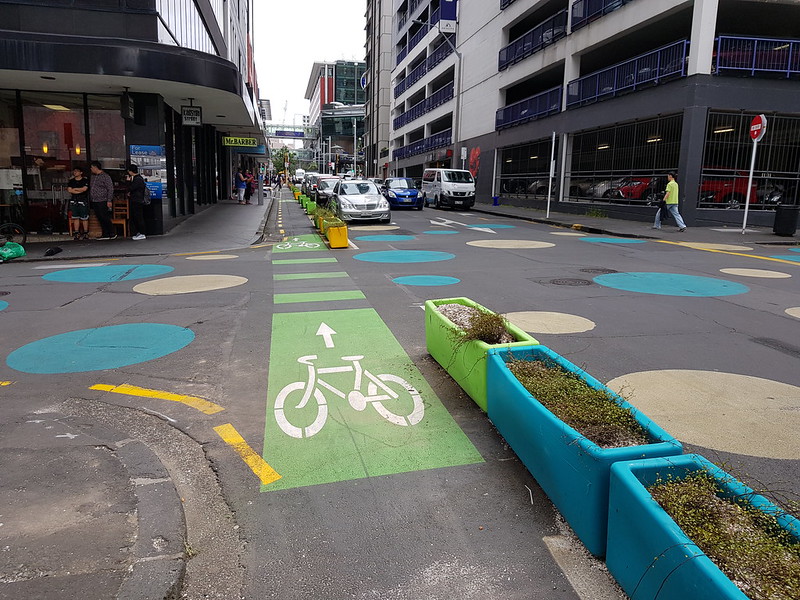Colour my world: safe, sensible surfaces
Where presented / published:
2WALKandCYCLE Conference 2021, Dunedin
Coloured surfacing is commonly used to help highlight certain traffic treatments, including “special vehicle lanes” such as cycle and bus lanes, street crossings, and speed zone thresholds. Increasingly it is also being used for place-making and tactical urbanism treatments. Existing NZ transport legislation (via the Traffic Control Devices Rule) outlines certain situations where coloured surfacing can be legally used, and best-practice guidance such as the Pedestrian/Cycling Network Guidance and Traffic Control Devices Manual give examples and specifications for its use.
However, there is a concern by some in the industry around the current use of colour outside of existing guidance, often in quite unconventional situations or in an ad hoc manner. This has the potential to compromise the use of standard colours for certain situations (e.g. cycle facilities, pedestrian crossings) and so there is a need for a more consistent approach nationally.
Based on some work for the NZ Transport Agency, this presentation provides an overview of the current state of play of coloured surfacing for pedestrian/cycle facilities and other related applications, including shared streets and school zones. Five different potential roles for the use of coloured surfacing have been identified; namely to highlight, to direct, to slow, to prioritise, and to enhance placemaking. The aim of this discussion is to seek further feedback on what may be used and where, to help produce a more coherent national policy on the use of coloured surfacing.
A copy of Glen's presentation can be found here.




